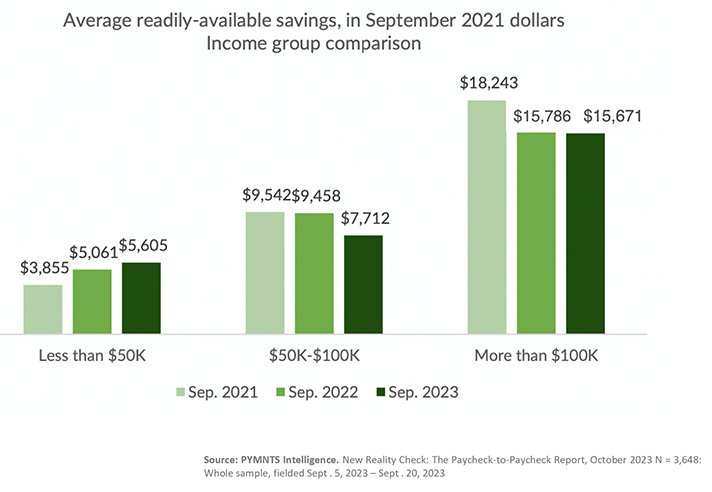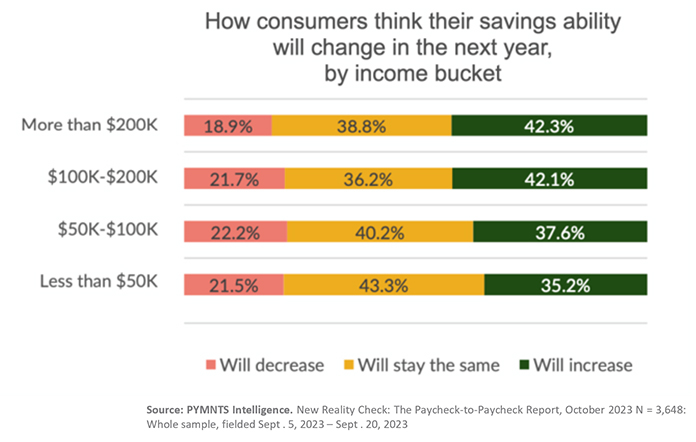Middle-Income Consumers Lose 18% of Savings Due to Inflation

The high and persistent inflation that has shaken the global economy in recent years has also seeped into U.S. households.
Despite efforts to manage budgets and maintain an equivalent level of consumption, many consumers across financial lifestyles have been forced to dip into their savings. As a result, nearly eight out of 10 consumers have depleted their savings to pay their bills, and 12% have spent more than what they earned in the last six months, as PYMNTS Intelligence has found.
However, inflation has had an uneven impact on consumers’ savings across the population.
“New Reality Check: The Paycheck-to-Paycheck Report — The Savings Deep Dive Edition,” is a PYMNTS Intelligence and LendingClub collaboration analyzing consumers’ financial situations. In this latest edition, the study takes a deep dive into why consumers aren’t holding on to their savings for very long.

According to the study, though average aggregate savings have not fluctuated significantly since September 2022 in nominal terms, they plummeted by 2.1%, in real terms, evidence that inflation — though is not as strong as in the post-pandemic period — is still persistent.
The middle-income segment, which accounts for more than half of the population, has seen their readily available savings in real terms plummet by 18% in the last year.
This demographic, which includes individuals with annual earnings between $50,000 and $100,000, represents the largest consuming class. Overall, 47% of these consumers cite diminished savings capacity in the last year, while nearly half say their savings increased.
Emergency expenses, major life events and income reductions appear to be the main factors that ate into consumers’ savings. How this group’s purchasing power and savings capacity have been affected remains to be seen in overall economic trends.
When it comes to the high-income segment — individuals making more than $100,000 per year — there were no changes in their savings pattern in the past year, but as PYMNTS Intelligence found, 44% of this segment live paycheck to paycheck.
Despite the significant depletion in savings over last two years, consumers of all income brackets are optimistic about their savings possibilities in the year to come.
Thirty-five percent of consumers belonging to the low-income segment say they expect an increase of their savings, compared to 37% in the middle-income segment and 45% among high earners. Improved economic prospects and stabilization of inflation contribute to this perception.


